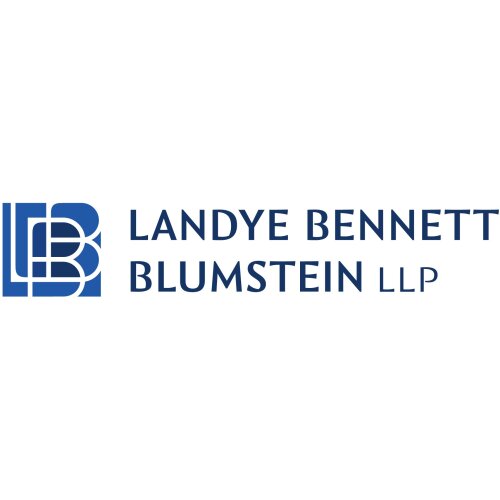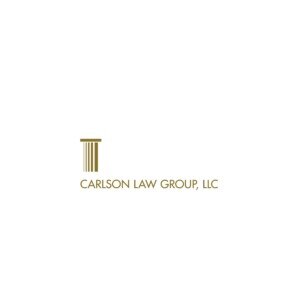Best Restructuring & Insolvency Lawyers in Alaska
Share your needs with us, get contacted by law firms.
Free. Takes 2 min.
Or refine your search by selecting a city:
List of the best lawyers in Alaska, United States
About Restructuring & Insolvency Law in Alaska, United States
Restructuring and insolvency law in Alaska addresses the legal processes and remedies available to individuals, businesses, and other entities that are experiencing financial distress. The goal of these laws is to provide a structured and fair way for debtors to manage their obligations while protecting the interests of creditors. In Alaska, the federal Bankruptcy Code governs most insolvency proceedings, with bankruptcy courts handling various cases such as Chapter 7 (liquidation), Chapter 11 (reorganization), and Chapter 13 (repayment plans for individuals). Alongside federal law, a range of state statutes and regulations impact how restructuring and insolvency matters are handled within Alaska.
Why You May Need a Lawyer
Facing insolvency or financial restructuring is complex and stressful. A lawyer with expertise in restructuring and insolvency can help you understand your options and advocate on your behalf. Common situations that call for legal assistance include:
- Receiving threats of legal action from creditors or collection agencies
- Being served with a lawsuit or notice of bankruptcy proceedings
- Needing to reorganize a business or negotiate with lenders
- Considering voluntary bankruptcy due to overwhelming debt
- Trying to protect assets from liquidation
- Navigating state or federal bankruptcy filings
- Creditors seeking to collect from bankrupt individuals or companies
A lawyer will assess your unique situation, explain the legal ramifications of your choices, and represent your interests throughout the process - whether you are an individual debtor, a business owner, or a creditor.
Local Laws Overview
While most insolvency cases in Alaska are governed by federal bankruptcy law, certain aspects of the process are shaped by state statutes, regulations, and local rules. Key aspects include:
- State Exemptions: Alaska law allows debtors to claim certain property as exempt from bankruptcy, such as a portion of the equity in a primary residence (homestead exemption), personal property, and retirement accounts. The exact value and type of exemptions are defined by Alaska statutes.
- Nonjudicial Foreclosure: Alaska permits nonjudicial foreclosure on deeds of trust, allowing lenders to reclaim property without court intervention if borrowers default.
- Local Bankruptcy Court: Bankruptcy cases in Alaska are heard in the United States Bankruptcy Court for the District of Alaska, which administers cases under federal law while applying state-specific rules where necessary.
- Small Business Provisions: Recent federal reforms, such as the Small Business Reorganization Act, apply in Alaska, streamlining the bankruptcy process for small businesses seeking to restructure.
- Alaska Statute Provisions: Alaska’s statutes contain various provisions related to creditor-debtor relationships, fraudulent transfers, and receivership, which may impact how debts are recovered outside the bankruptcy court.
Understanding both federal and state laws is crucial for anyone navigating restructuring or insolvency in Alaska.
Frequently Asked Questions
What types of bankruptcy are available in Alaska?
Individuals can file for Chapter 7 or Chapter 13 bankruptcy, while businesses may also seek Chapter 11 bankruptcy for reorganization. Chapter 12 is available for family farmers and fishermen.
Can I keep my home if I file for bankruptcy in Alaska?
You may be able to keep your home, depending on the type of bankruptcy you file and whether your equity falls within Alaska’s homestead exemption limits.
What property is exempt from bankruptcy in Alaska?
Alaska allows exemptions such as a portion of home equity, personal property, retirement accounts, certain tools of the trade, and some insurance benefits. The specific limits are set by state law.
How long does the bankruptcy process take?
A Chapter 7 bankruptcy typically takes 3 to 6 months, while Chapter 13 and Chapter 11 can last from several months to several years, depending on the repayment plan and complexity of the case.
Can creditors continue to collect once I file for bankruptcy?
Filing for bankruptcy triggers an automatic stay, which temporarily halts most collection actions, wage garnishments, and lawsuits against you.
Do I need a lawyer to file for bankruptcy in Alaska?
Although individuals are not legally required to have a lawyer, professional legal guidance is highly recommended due to the complexity and lasting consequences of bankruptcy proceedings.
What is the difference between insolvency and bankruptcy?
Insolvency refers to the financial state of being unable to pay debts as they come due. Bankruptcy is a formal legal process for resolving insolvency and discharging or restructuring debts.
What is restructuring, and how does it differ from liquidation?
Restructuring involves reorganizing a business’s finances, operations, or structure to enable debt repayment and continued operation. Liquidation entails selling off assets to satisfy debts, usually ending the business.
Can businesses avoid bankruptcy through restructuring in Alaska?
Yes, businesses may attempt out-of-court restructurings, negotiations with creditors, or use Chapter 11 bankruptcy to reorganize and remain operational.
What happens to my credit if I declare bankruptcy?
A bankruptcy will significantly impact your credit score and remain on your credit report for several years, depending on the chapter filed. Rebuilding credit afterward is possible, but it takes time.
Additional Resources
If you need legal advice or support regarding restructuring and insolvency in Alaska, the following resources may be helpful:
- United States Bankruptcy Court for the District of Alaska
- Alaska Bar Association Lawyer Referral Service
- Alaska Legal Services Corporation (offers assistance for low-income individuals)
- Office of the United States Trustee (responsible for overseeing bankruptcy administration)
- Alaska Department of Commerce, Community, and Economic Development
- Consumer Financial Protection Bureau (for general consumer debt resources)
Next Steps
If you or your business are facing financial distress, consider the following steps:
- Gather relevant financial documents, such as tax returns, pay stubs, asset and debt lists, and loan agreements
- Contact a lawyer with experience in restructuring and insolvency law in Alaska for an initial consultation
- Discuss all available options, including informal negotiations, debt restructuring, or filing for bankruptcy
- Review and understand the potential consequences of each option, especially related to asset protection and credit impact
- If you decide to proceed with bankruptcy or restructuring, follow your lawyer's guidance and comply with all court requirements and deadlines
Taking early action and seeking professional legal advice can often provide more options and better outcomes when dealing with restructuring and insolvency in Alaska.
Lawzana helps you find the best lawyers and law firms in Alaska through a curated and pre-screened list of qualified legal professionals. Our platform offers rankings and detailed profiles of attorneys and law firms, allowing you to compare based on practice areas, including Restructuring & Insolvency, experience, and client feedback.
Each profile includes a description of the firm's areas of practice, client reviews, team members and partners, year of establishment, spoken languages, office locations, contact information, social media presence, and any published articles or resources. Most firms on our platform speak English and are experienced in both local and international legal matters.
Get a quote from top-rated law firms in Alaska, United States — quickly, securely, and without unnecessary hassle.
Disclaimer:
The information provided on this page is for general informational purposes only and does not constitute legal advice. While we strive to ensure the accuracy and relevance of the content, legal information may change over time, and interpretations of the law can vary. You should always consult with a qualified legal professional for advice specific to your situation.
We disclaim all liability for actions taken or not taken based on the content of this page. If you believe any information is incorrect or outdated, please contact us, and we will review and update it where appropriate.
Browse restructuring & insolvency law firms by city in Alaska
Refine your search by selecting a city.
















